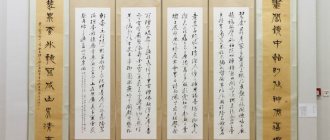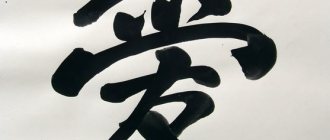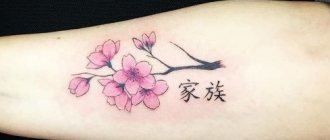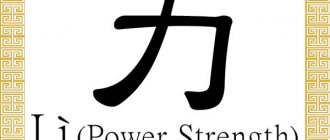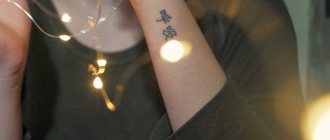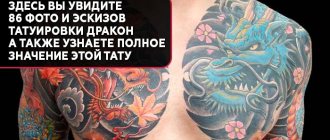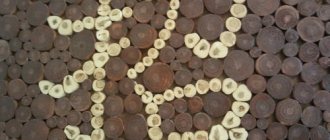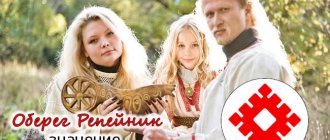Quote from ole4ka3786
Read in full In your quotation book or community!
Hieroglyphs of love, luck, happiness and wealth
Feng Shui... the philosophy of success and prosperity, the teaching of harmony and peace, the ancient Chinese science of attracting happiness and prosperity. How many sacred gifts are stored in it! The sages who created all the postulates of Feng Shui not only respected the laws of Genesis, but also took care of their safety. It is not surprising that so many different and effective ways to improve our lives have come to us. One of them is writing hieroglyphs.
For a European person, a hieroglyph is an incomprehensible combination of dashes and squiggles. However, all these keys were created for a reason, but were a prototype of the surrounding world. Each sign is a specific symbol of water, man, mountains, trees, and so on. This is why hieroglyphs have such power and are rightfully recognized as one of the most effective talismans for attracting good luck, love or happiness into your life!
Want to test their effects for yourself? Let me offer you a choice of several excellent and time-tested hieroglyphs-talismans:
Tattoo hieroglyphs and their meaning
The term “tattoo” was brought to Europe by Captain Cook.
Before he introduced the public to the first “savage” with a large number of tattoos on his face and torso, “skin drawings” were not very common among the European population. They were mainly made by sailors and odious individuals from the underworld. Even in the recent past, tattoo bearers in Russia were the so-called “gentlemen of fortune.” Penitentiary inmates wear tattoos (portaki) not only for beauty. There is a whole system of signs and their location on the body, from which you can learn a lot about the owner of prison tattoos.
Nowadays, more and more often you can find a media personality or a representative of bohemia with a tattoo on the body. These small works of art (and body art already has the status of a culture and gathers its fans and artists at annual festivals) can be seen on the body of a housewife, businessman or student.
Patterns, portraits, images of real and mythological animals, inscriptions - all this not only decorates a person, bringing uniqueness to his image and image, but also conveys information about the owner to others.
Sometimes a tattoo is done as a reminder to oneself of some significant event or person.
In such cases, they choose inscriptions in an incomprehensible (for most people) language - this is why hieroglyph tattoos are so popular, their meaning will not be understood by an idle onlooker, but they remind the owner of something important
Artists recommend that the Russian-speaking public be sure to find out the meaning of tattoo hieroglyphs in Russian before proceeding with application. After all, the result will not be easy to delete later, and due to the specificity of the hieroglyphic language, embarrassment may occur. For example, someone wants to get a tattoo - hieroglyphs with the meaning of their name. In Chinese and Japanese, each character is not a letter, but a word or even a phrase or sentence
A European should be very careful when trying to reproduce his name in hieroglyphs - sounds consonant with the name can mean something unpleasant or even carry an offensive meaning
Are tattoo hieroglyphs popular in your homeland?
There are very few fans of tattoos with hieroglyphs among native speakers - the Chinese and Japanese. And this is understandable - for them, hieroglyphs are not beautiful and mysterious pictures that carry a sacred meaning, but just words, text. For them, the inscription in their native language seems as banal and vulgar as for the Russians: “Vasya was here” or “love to the grave.” Therefore, the Chinese, who understand the meaning of Chinese characters, often choose tattoos depicting exotic plants and fantastic animals - dragons, unicorns, two-headed snakes.
The history of tattooing in Japan goes back to ancient times. Members of the Japanese mafia - the Yakuza - acquired indelible drawings. The tattoos carried information about belonging to a criminal clan, status, regalia, and luck. Now the tattoo is a success among respectable and law-abiding citizens of Japan. Residents of the Japanese islands extremely rarely use Japanese characters in tattoos, preferring not to deviate from traditions and convey the meaning of the tattoo with images of mythical animals - dragons, sirens, sea monsters.
Among Europeans, hieroglyphs are popular not only because of their aesthetics (in the Russian opinion, these “krakozyabrs” look very nice), but also because of their sense of mystery. Tattoos of hieroglyphs on the neck look especially good. Their meaning is incomprehensible to others, but has a sacred meaning for the owner or owner.
Regardless of which tattoo was chosen: a hieroglyph with the meaning of love, fidelity or strength, it is worth carefully examining the sketch for visual attractiveness. There is no need to rush in such a matter - after all, only a beautiful and meaningful drawing will never be disliked, but will bring good luck to the owner. At the very least, many tattoo wearers (including celebrities such as Angelina Jolie) believe that their unusual, unique and stunning tattoo contributed to their success.
You can see:
Maneki Neko - Japanese symbol of happiness
Maneki Neko are images of cute cats with their paws raised. There are many good luck talismans in Japan, Maneki Neko is one of the most popular. This talisman has many names - “inviting cat”, “calling cat”, “money cat”. But they all have one common meaning - good luck will definitely settle in your home. If we translate the expression “maneki-neko” literally from Japanese, it means “beckoning cat.”
At first glance, I was fascinated by these cat figures with some spontaneity and touching, they radiate kindness, warmth and warm the soul. Figurines are placed at home or in the office, in a store or pub to attract good luck, wealth, friends, assistants, associates, clients, customers; they can be made of a variety of materials: clay, porcelain, wood, jade, silver, gold. A raised paw and a collar with a bell are a must-have for alluring cats. It is believed that the first domestic cats came to Japan in the 6th century thanks to a Buddhist monk who was tasked with bringing ancient manuscripts. Trying to bring the sacred scriptures safe and sound, the monk took a domestic cat on the sea voyage from China to Japan to protect the manuscripts from rats. The cat fulfilled its duty and remained in Japan. Due to the small number (and therefore high cost) of cats, only wealthy people could afford to keep them at home. Collars were made for the cats and a bell was hung so that they would not get lost.
Cats were also kept at Buddhist temples, they were carefully protected and kept on a special leash. The duty of cats was to catch mice, and this is what made it possible to preserve the most valuable ancient Buddhist manuscripts to this day. There are several legends about the origin of the Maneki Neko symbol; the stories contain images of a wealthy gentleman or a poor woman and even a courtesan, but the main character is a cat. The first mentions of Maneki-Neko appeared at the beginning of the 17th century.
Antique Maneki Neko
Maneki Neko images can have the right, left, or both legs raised at the same time. Maneki Neko with her left paw raised has the ability to attract good luck, wealth, happiness and love. Raised right paw - to wealth. Cats with two raised paws to attract buyers and guests, and to “lure” monetary luck and happiness. According to legend, the higher the cat's paw is raised, the faster the wish will come true.
The colors of Maneko Neko can be different and each has its own meaning. The most popular among the Japanese is the tricolor (white with spots) Maneki Neko. It is believed that the tricolor cat is the happiest talisman, personifying a happy and comfortable life. There are also white, gold, black, green, red and pink Maneki Neko.
Cat figures can be with open or closed eyes. Closed eyes symbolize receiving desired benefits in the near future, while open eyes symbolize the fulfillment of desires in the future. In addition, Maneki Neko has different additions: a red or multi-colored collar, and a bell or coin on the collar. You can often see cats holding a Koban (Edo era gold coin) worth 10 million ryu in their paw, which allows the cat to claim the role of an effective money amulet. Sometimes Maneki Neko wears a red bib - this is a sign of patronage for children and pregnant women. In its paws, a cat can hold a coin, a carp, a scroll with hieroglyphs and other talismans that enhance the energy of the cat symbol. Some Maneki Neko figurines hold sea bream in their paws, which is a symbol of long life.
In 1994, the Maneki-Neko Museum opened in Okayama. The museum has a huge collection of “cats that bring good luck.”
In the capital of Japan, Tokyo, there is a temple dedicated to Maneko Neko.
My acquaintance with this wonderful Japanese talisman once inspired me to create one of the first works using an unusual technique. I wanted to make Maneki Neko in an unconventional material!
I hope that the publication will be useful to you and will give you new ideas in creative work and interior design of your home or office. Images of cute and charming cats, it seems to me, cannot leave anyone indifferent!
All materials are taken from free access on the Internet.
Best regards, Lana.
Japanese characters
Japanese characters were borrowed from China, which is why locals call them “Chinese characters.” It is believed that writing in the Land of the Rising Sun appeared in the 5th century BC. e.
New Eyebrow hair tattoo: photos and examples of makeup before and after the procedure
School graduates must learn 2,136 characters that are constantly used in everyday life. The list is approved by the Japanese government. Europeans are often occupied with one question. Hieroglyphs are ideal for tattoos, but can they be used all the time? Why does such a system, inconvenient for writing, still exist and not lose its position?
The relevance of hieroglyphs lies in their advantages. Japanese, Koreans and Chinese read signs differently, but at the same time understand the meaning of what they read in the same way. In addition, compact writing is convenient because an entire story can be told with just a few characters. Japanese characters are more concise and simpler than Chinese ones. They can be applied not only with black paint.
Other colors are also popular:
- blue-green. Symbolizes the wind. At the same time, it embodies the calmness of the sky and trees, as well as the incredible power of a hurricane that sweeps away everything in its path;
- red. Represents fire, development and violent energy. The Japanese believe that this color can protect from evil and misfortune, attracting joy and tranquility into life;
- yellow. Inextricably linked with land, prosperity and permanence;
- white is a controversial color. It is associated in the Land of the Rising Sun with mourning, but at the same time protects from outside forces.
Tattoos of different colors are made to give them greater expressiveness and enhance energy. For the same purpose, hieroglyphs are sometimes outlined with a red line. Sometimes additional symbols and suitable images are included in the drawing.
Activate the desired zone
Sign - double luck
How to use hieroglyphs correctly so that they bring good luck, a lot of happiness and wealth into your life? In the Feng Shui system, there is a special scheme that contains the wisdom of the correct arrangement of objects to attract flows of “chi” energy. This is a “Bagua grid”, with which you can schematically divide your home into sectors, and place a hieroglyph in one of them, depending on your personal goals. The grid consists of 9 parts-sectors, each of them reflects the state of one of the important areas of life:
- Fame (in the south) reflects your reputation and life plans;
- Wealth (in the southeast) is associated with external material goods;
- Marriage and love (southwest) is associated with the relationship between spouses, with their sexual and spiritual life;
- Family (in the east) reflects not only the relationship between spouses, but also relationships with relatives;
- Creativity (in the West);
- Health (center) is in the middle of the diagram, being the main sector;
- Wisdom (in the Northeast) includes self-development, experience and intelligence;
- Career (in the north) reflects professional level and material well-being.
Examples of hieroglyphs with translation
Tattoo parlors offer each client a standard set of hieroglyphs. Most often, these symbols are used as talisman tattoos.
Happiness
Hieroglyph happiness
According to the Chinese, happiness depends on the protection of Heaven and the Gods. The tattoo is aimed at good luck, happiness and luck in any area.
Great happiness
Hieroglyph Great happiness
This tattoo is considered a very powerful talisman. Many believe that she grants wishes. It is best to use it to attract happiness in a relationship with your significant other.
Love
Hieroglyph Love
Helps attract happy love. Helps to make love mutual, attract a life partner and gives happiness and tranquility.
Eternal love
Hieroglyph Eternal Love
Also used as a talisman, it represents “love to the grave”, mutual understanding, support, sincere and happy love. Keeps fiery love forever and supports the feelings of two people.
Hieroglyph Luck
Great idea for a talisman tattoo. Preserves luck and increases it, gives luck.
Wealth
Hieroglyph Wealth
Helps create the right atmosphere to attract wealth and prosperity in the right area. Provides both material and spiritual wealth. Brings both money and good luck. It is a good amulet.
Money
Hieroglyph Money
The most common tattoo option. Helps in attracting wealth and money. If this sign is placed indoors, it also attracts wealth. It looks like a hieroglyph for wealth, but it attracts only money, prosperity and good luck in such matters.
Prosperity
Hieroglyph Prosperity
Helps in matters of career advancement, regulates failures in life. Used to attract good luck in the desired field of activity. It is considered not only a talisman, but also a talisman.
Abundance
Hieroglyph Abundance
Brings wealth to the home of the tattoo bearer, both monetary and moral. Similar to the hieroglyph of prosperity, it attracts good luck to the desired field of activity.
Hieroglyph Longevity
Improves health and increases life expectancy. It is considered a talisman and protects against death at a young age.
Force
Hieroglyph Strength
Increases physical and spiritual strength, strengthens the moral foundation, helps the owner cope with problems more effectively and quickly. Suitable for exemplary family men.
Hieroglyph Joy
Used to achieve inner harmony, attract and maintain a good mood.
Health
Hieroglyph Health
Helps in solving health problems, restores physical and mental strength. Extends life and its quality.
World
Hieroglyph World
It means great responsibility and power. Can be used for tattooing due to some personal beliefs.
beauty
Hieroglyph Beauty
New 31 lion tattoos: what does a predator tattoo mean for girls and men
It is considered a talisman for attracting beauty and maintains external and internal attractiveness.
Hieroglyph Bravery
Makes the owner of the tattoo more courageous and courageous, helps to cope with difficulties.
Independence
Hieroglyph Independence
Represents freedom of action and the desire to do things your own way. Helps get rid of bad habits or activities.
Courage
Hieroglyph Courage
Characterizes the owner of the tattoo as a strong and strong-willed person and helps to maintain this quality.
Hieroglyph Dream
Represents sublimity, inspiration, promotes the fulfillment of desires.
Fulfillment of desires
Hieroglyph Fulfillment of wishes
Like the previous hieroglyph, it helps in the fulfillment of cherished desires and is a more powerful amulet in comparison.
First of all, these are the Seven Gods of Happiness七福神“Shitifukujin” - these are the gods of Buddhist syncretism. Figurines with them bring good luck in areas led by the gods; often the figurines (netsuke) are made as a set, which seem to float in a magic boat “takarabune”:
Japanese symbols of good luck
1) Ebisu 恵比寿– God with a fishing rod in his right hand and a sea bream under his left armpit. According to legend, he swam out of the sea on a large whale, which is why he is a great patron of the whale fishery.
In ancient times, he was also revered as the angry god of the sea, the god of shipwrecks, but, to the rescue of drowning people, he could send whales and dolphins. Later he became the patron of rice fields, fishermen, maritime communications, and the prosperity of trade business.
2) Daikokuten 大黒天, – God “Great Black Sky” – patron of agriculture, wealth and prosperity. Depicted in a peasant's hood, sometimes standing on two bags or barrels of rice, his left hand holds a knapsack over his shoulder, which contains 3 treasures - patience, wisdom and rice.
Daikokuten was also no stranger to anger, and could send down thunder and lightning.
The underworld chose him as one of its patrons - it gives success in battles for leadership.
In his right hand, Daikokuten often holds "Uchide nokozuchi" 打ち出の小槌 - a magic hammer that makes dreams come true (yume o kanaeru)夢をかなえる.
This hammer is very popular in Japan and in itself, it is made as a talisman of well-being from richly embroidered fabric, wood or metals with inlay, in the form of a wall/body pendant or just a small sculpture on a pad.
They often depict the following hieroglyphs: Fuku –福“luck”,
Hieroglyph Fuku - "Luck"
or Oni –鬼“demon” (yakuza mascot, most often).
In addition, it can be depicted in paintings (often together with a rat - “wisdom and dexterity in decision-making”),
Or in the form of a tattoo - irezumi.
3) Bishamonten 毘沙門天sometimes Tamonten is the patron of war and samurai, also revered as the god of gain.
He is depicted in a metal helmet, in armor, armed with a sword. Protector of a Buddhist temple, in his other hand he holds a miniature replica of a pagoda or treasure tower. God distributes wealth from it to good people, but if a person ceases to be worthy of it, he can take it away and punish it.
4) Benzaiten 弁才天, or Benten 弁天 – The patron goddess of artists in all areas of the arts, literature, painting, eloquence, wisdom and, above all, playing musical instruments. In addition, it protects fertility. She is also depicted with a musical instrument - a biwa. She is often accompanied by a snake - a symbol of female beauty and intelligence.
5) Fukurokuju 福禄寿– a Chinese hermit who works miracles. Depicted with a very high bald forehead or just a long white beard, mustache and eyebrows (like Pei Mei).
In his hands he holds a scroll in which the wisdom of the whole world is written, sometimes just a folding fan. Patron of wisdom, protector of property, prosperity and good family relationships, health and longevity.
6) Jurojin 寿老人– a Japanese old man with a long beard, often does not differ from the previous one or represents his hypostasis. The head is covered with a red cap. In his hands he holds a scroll, which indicates the terms allotted for life, both for people and animals. According to another version, the scroll describes the secrets of longevity and the secret of a happy life, and sometimes the scroll replaces a peach. In the other hand there is a staff - shaku (the first weapon of the Yamabushi warrior-priests). In addition, he is revered as the patron god of sake and its production.
7) Hotei 布袋– a mortal god, is the incarnation on earth of the bodhisattva Maitreya Laughing Buddha – his nickname, depicted as a pot-bellied monk, he has a bag that never runs out, from which he can get anything, helping the poor and needy. If anyone asked what was in the bag, he would answer: “I have the whole world in there.” Instead of a bag, sometimes there are images with gold bars and precious stones.
To make your wish come true, you need to rub the figurine on your stomach three hundred times, keeping in your head the thought of what you want coming true.
We also recommend reading:
- The meaning of netsuke
Character traits
The style, motive, and plot of tattoos from different countries are completely different, each of them carries its own meaning. The Japanese tattoo style does not exactly come from Japan, but rather even from China; inspired artists put into their drawings the history of existence, the battle between man and the animal world, and the delights of flowering plants. Based on such images, the Japanese copied and added their own features, subtleties, and semantic prejudices, and a new style was established.
The main factors were curvy images, and the secondary factors were bright and colorful, with elaborate lines and sharp angles, thus helping to show the figure more clearly and complement it.
It should be noted that the symbolism and subtext of each sketch has been and will remain unchanged, in other words, a tattoo tattooed on your body will mean your life path or a comparison between you and a wild animal that unites you.
The Japanese believe that getting a tattoo changes you and your lifestyle through religion, spirituality, and myth. An image on the body promises a change in nature in the direction conveyed by the image.
Chinese tattoos
The traditional Chinese script used in Hong Kong, Taiwan and Macau is called Hanzi. About 47 thousand hieroglyphs are known, but many of them are rarely used. To write correctly, you need to remember four thousand characters. Sometimes a word can be composed of several hieroglyphs, where each character is a syllable.
China also has a simplified script, invented to improve literacy in the country. Dialects differ in different parts of China, but the written language remains the same. If you need to convey a message, but a local resident does not understand you, then you can simply write your thought on paper.
To understand Chinese characters, it is important to know special graphic components - keys. These are simple signs that help to assign hieroglyphs to different topics.
For example, the key “man” in combination with other signs can also mean “death”, “many”, “100 million”. Therefore, you should not combine several characters yourself if you want to get a tattoo with Chinese characters.
Most often they are made black, but sometimes red or white paint is chosen. Sometimes hieroglyph tattoos are applied not as an independent design, but in addition to another image.
The most popular meanings of hieroglyph tattoos
The huge number of symbols used in hieroglyphic writing can confuse the uninitiated. The number of different characters in such languages reaches several tens of thousands in each.
Some people do not want to spend too much time searching for an adequate translation of the desired word, thought or phrase and choose the most popular meanings of hieroglyph tattoos.
Very often there are words about love, family, harmony, wealth, happiness, luck, peace and dreams. Such tattoos are often applied by girls. Hieroglyphs with the meaning of fire, dragon, tiger, strength, courage, masculinity and warrior are also popular. They are mainly chosen by men.
Representatives of both sexes often also paint short phrases on their bodies that have a mystical and mysterious meaning. Their translation comes down to some philosophical categories. Hieroglyphs meaning karma, life and eternity, fate and aspirations, travel in search of truth are popular.
Japanese character for “love”
愛(ai). Perhaps one of the most popular hieroglyphs, especially among married couples. Helps attract true feelings. Not to be confused with 恋 (koi). In the first case, we mean love not only for the opposite sex, but also for nature, life, and art. In the second case - romantic love for a specific person, even to some extent manifested in the desire to possess.
The order of strokes of the character 愛:
Types of hieroglyph tattoos
Tattoos of hieroglyphs and their meaning are a very subtle and complex topic. There are many cases where a person ordered one phrase and received a completely different one. Chinese calligraphy is very complex and every stroke affects the interpretation of the symbol.
Hieroglyphs tattoo
Therefore, if you decide to get a tattoo of Chinese characters, you should not unconditionally trust the artist, although in many salons they will provide you with a large catalog of tattoos of hieroglyphs with translation. Consult with a teacher, or better yet, a native Chinese speaker.
Chinese characters tattoo
The Chinese are very superstitious people, so their writing is perceived with a certain amount of mysticism and mystery. Many people believe that a hieroglyph on the body will help attract what it means into a person’s life. The most popular options:
• hieroglyph love tattoo – it is chosen by those who want to meet their soul mate and believe that the feeling will be mutual. Most often this is a variant of a female tattoo;
• family hieroglyph tattoo - it is applied both by those who are just striving to create a social unit, and by those who have already joined the legal community. People believe that this hieroglyph will help improve relationships within the family, mutual understanding and harmony;
• hieroglyph tattoo for happiness – this choice is made by those who strive to achieve inner harmony. The concept of happiness can include different categories and for each person this list will be different. In order not to split or make tattoos with several hieroglyphs, people choose a common word, and what is meant by it - everyone decides for himself;
New 36 bear tattoos: the meaning of the beast for men and women
• hieroglyph luck tattoo – most often this is the choice of young people who dream of an easy and carefree life. They want good luck to accompany them in all their endeavors. The hieroglyph on the body is designed to lure capricious fortune into a person’s life;
• tattoo hieroglyph wealth - done by people striving for financial well-being and independence.
You can choose one of these hieroglyphs, or several at once. Usually they are placed one after another vertically.
Hieroglyphs can be used to encrypt not only abstract concepts. One of the most popular options is tattoos of hieroglyphs names. Behind beautiful oriental symbols a person can hide his own name or the names of loved ones.
Sketches of hieroglyphs for tattoos with translation
Entire phrases written in hieroglyphs are also popular. Most often, famous sayings of eastern philosophers Confucius and Lao Tzu are taken for this. Eastern philosophy is extremely popular in the world. In quotes from great thinkers you can find a suitable phrase for any occasion.
Men prefer to make hieroglyphs denoting masculine concepts such as strength, courage, power, power. Or encrypt animal symbols with these symbols. The most popular option is the dragon hieroglyph tattoo. This is a traditional eastern symbol of masculinity and energy.
In addition to Chinese tattoos, Japanese hieroglyphs are also popular. However, they are much less common. This is explained by the fact that fascination with Japanese culture can be considered a relatively new phenomenon.
Japanese hieroglyphs tattoo - photo
Japanese tattoos with hieroglyphs and inscriptions usually accompany large compositions in the oriental style. They are more popular among men.
What is important to remember before getting Japanese characters as a tattoo?
Firstly, in order not to become the hero of one of the ridiculous stories, you should choose well-known hieroglyphs, the meaning of which is easy to check or seek help in drawing up a sketch from professionals who understand the Japanese language.
Secondly, if you believe that every tattoo carries a symbolic meaning, then it is worth remembering that a Japanese character can have several contradictory meanings. Therefore, you should carefully ensure that the sign you choose means only positive things.
Also, do not forget about correct spelling. One missing line can radically change the translation or simply make the symbol meaningless.
Before you get a tattoo with hieroglyphs, you need to decide what language you want the inscription in. Chinese and Japanese letters are very similar - to a Western viewer they even look the same, but in reality they are not.
In addition to hieroglyphs, the Japanese language has two more alphabet - hiragana and katakana - which are also used for body art. And to find out how they differ from each other, we recommend that you read the article on our website about the 3 Japanese scripts.
Application options
Of course it sounds great: “When a tattoo is applied to the neck, the aura is cleansed, the “cone” rises, and the chakras open.” But it is better to be guided by other criteria.
If you want others to see and know about the tattoo, if you want to say something with it, to attract attention, do it in an open place. If you want to please yourself and a loved one, you are not ready to advertise your “painting” to others, do it where it is easy to cover with clothes
If you want to please yourself and a loved one, but are not ready to advertise your “painting” to others, do it where it is easy to cover it with clothes.
Everything here is purely individual, depending on the person himself, the choice of sketch, style. Some designs look good on the arm, others on the chest or thigh.
Think about it, weigh it in any case, the choice will be yours.
How to prepare for getting a tattoo?
First you need to prepare a sketch and decide on the location of application. When choosing, it is important to consider the size of the future tattoo. If you plan to make a small and neat drawing, then it is better to apply simple marks on the body without thin lines and strokes.
An experienced craftsman independently makes or finds a sketch, taking into account all your preferences and wishes. You can select the pictures you like in advance, print them and bring them to the consultation.
On the eve of the procedure, it is not recommended to drink alcoholic beverages - alcohol strongly thins the blood, which can cause bleeding. It is also better not to take medications that affect blood pressure. When the drawing is agreed upon, the master applies a special gel or spray to the skin to make the process less painful.
It is important that all tools are disposable and the tattooist must wear gloves. First, he simply applies a design using ink to the skin, and then turns on a special machine - small holes are made in the skin, inside which the paint remains. After the hieroglyph tattoo is applied, time is needed for the skin to recover.
Swelling and slight redness persist for several days. You need to refrain from sunbathing, do not use a hard washcloth and do not go to the bathhouse. Scratching the skin is prohibited. If you experience unpleasant sensations at the site where the drawing was applied, it is better to immediately make an appointment with a doctor - no one is immune from the risk of infection. It usually takes at least two weeks to heal.
To make the process faster and easier, it is better to get a hieroglyph tattoo done in cool weather - for example, late autumn or winter.
